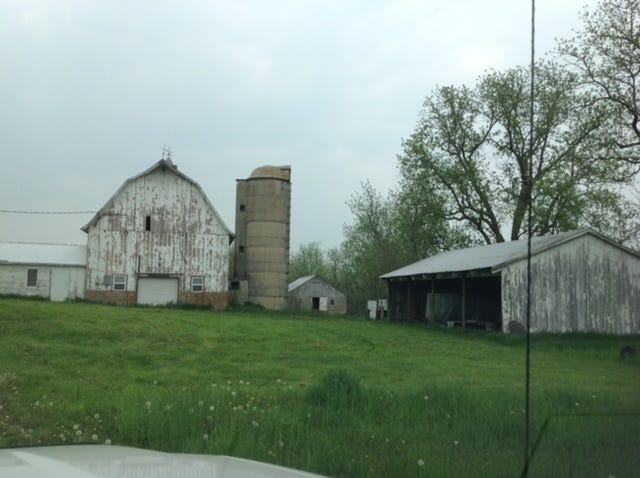How did farmers of yesteryear farm? With intelligence, perseverance and ingenuity

I grew up on a small 80-acre dairy farm a couple of generations ago using horses as our source of power, no electricity and few of the machines or equipment found on the farms of today, But strangely enough we used some of the management practices now being promoted and used today.
We practiced rotational grazing before it was a buzzword
Take managed cattle grazing, something that seems new today. I well remember the big fields of oats that had been alfalfa/brome overseeded into hay and grazing fields. The grazing areas were split into small plots by using movable electric fences. It was the job of my brother and I to move the fences and cows every hour or two to a new plot and allow regrowth and new forage for the herd.
At some point, we applied fertilizer to keep the pasture green and edible. If you read dairy magazines today you will find modern stories with similar stories of rotational grazing recommendations.
Manure pile was source of income and sore muscles
Before the days of big dairy herds and huge free-stall buildings, dairy barns were small, with cows locked in stanchions and manure collected in gutters behind the cows. Gutters were cleaned morning and night and spread in fields when the manure spreader could make its way through the snow.
When fields were snowbound the manure was transferred via a track (inside the barn) extending out into the barnyard and dumped on a pile to be spread after the weather warmed up and the manure thawed. At the Oncken farm, my brother and I used five-tine forks to hoist manure into the spreader.
We were paid 10 cents apiece per load. I remember one year hauling 80 spreader loads from the pile. Wow, that was $8 apiece!
Spreading manure was all about timing and available equipment
I also remember thinking that was a terrible way to get rid of manure. It was hard work but it did the job ‒ fertilizing the soil. Today the manure is stored in a lagoon and is spread at the right time thus doing its job of disposing the accumulated manure supply and adding valuable fertilizer to the soil. Which is best? A big pile of frozen manure or a big hole full of manure? I guess it depends on the era and equipment available.
Home built storage shed still standing rock solid 70 years later
For the first decade or so we did not have storage space for machinery, just the tobacco shed where smaller equipment – corn planter, tobacco planter, plow seeder – would fit between bents. This required a lot of moving things back and forth to make space. Until one day Dad showed us a set of plans he had received from the Farm Journal magazine for a pole-type building.
“This is what I've been looking for,” he said, “we can pretty much build it ourselves.”
As I remember, he had a set of rafters built at a lumber yard and bought enough lumber to make the needed rafters at home – which we did.
I also remember Dad hiring a high school friend of mine (John) who volunteered to help construct the roof as he liked to climb. Interestingly, I saw John about two years ago and he asked how the shed he helped build some 70 years ago was doing.
“Still standing straight and solid,” was my answer. “I think the creosote poles used then have helped.”
Looking back, one wonders how farmers farmed years ago. Then one realizes they have always been smart, doing what they must do, with what they have available to use. It usually works.
Contact John Oncken at jfodairy2@gmail.com